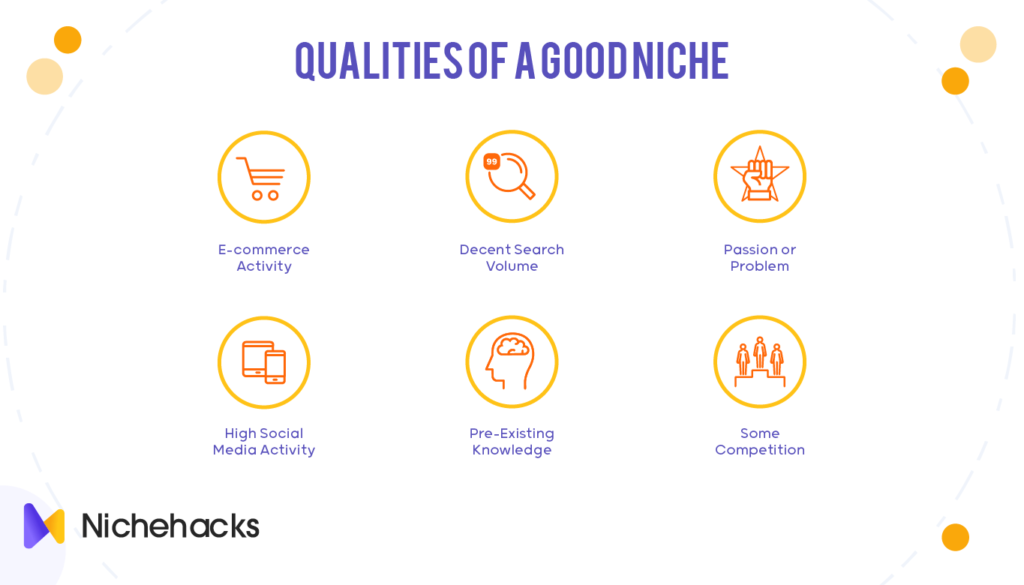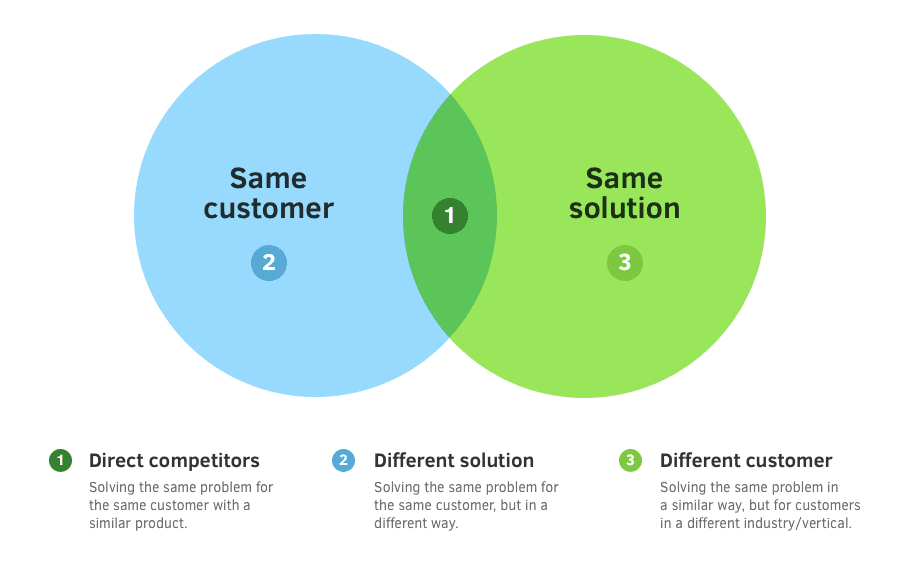The 5 Steps To Creating an eCommerce Store
Whether you're a web designer or not, creating an eCommerce store has never been easier.
Many small businesses have found that the benefits of running an eCommerce site are too great to ignore. As eCommerce becomes more common, the benefits and ease of selling online become better understood. You'll often find a strong interest in opening an eCommerce site when many of your friends succeed. But what is an eCommerce store? It's an online store where you sell products and services to the general public.
People often ran these stores out of someone's garage in the past, but now, many small businesses are taking advantage of the benefits of owning their eCommerce store.
The easiest way to create an eCommerce store is to use a pre-built platform like WooCommerce, Shopify or eBay. But what if you don't want to use an online platform?
Table of Contents
Five steps to creating your eCommerce store
1: Define your audience and their problems

In the eCommerce business, there are two things we need to define. One is our audience, the people we sell our products to, and the second is the problems we want to solve for them. To determine the problem our potential customers face, we need to understand and identify their needs.
Their problems can define the audience. The issues can be represented by the pain points they have. Once we define these, it will be much easier to determine what kind of product will satisfy their needs and solve their pain.
For example, I sell a service called “personal coaching”; my target audience is people struggling with career choices. Their problems are that they are unsure about which path to follow, and sometimes they are stuck on one path and unsure how to move forward. Therefore, the solutions I am offering are career guidance sessions and a monthly newsletter.
My audience is made up of people who are interested in personal growth and development. They want to achieve something but are unsure of what steps to take.
This is not a unique problem. We all have these needs and desires to grow and become the best version of ourselves. That is why the market is so extensive and so varied. There are many different kinds of people and many different types of problems. This means we have to cater for all of them to be successful.
The problems are usually related to money. For example, some people want to earn more, and others want to save more. So our solutions are a combination of how to get more money and how to spend less money. And we need to find ways to help people spend money more efficiently.
I would also say that knowing what the competition is doing is essential. In the case of my audience, I need to know how they are different from each other. Are they using the same services as me? Are they following the same paths that I am?
You can find out a lot by doing competitive research. It is always good to know what others are doing, whether they are succeeding or not, and what they are doing differently.
2: Choose your niche

The world of eCommerce has gained massive popularity in recent years. The growing trend in eCommerce has opened the door for many entrepreneurs to start their online businesses. Starting your own eCommerce business requires a lot of planning and effort.
Before starting your business, you should carefully choose your niche. You must be aware of the type of market you will compete in. The different types of markets include:
- Product Market – This is the most common type of market. In this type of market, people look for products and buy them. The customers will choose products based on price, quality, and other factors.
- Service Market – In this type of market, people seek services. They choose services based on expertise, experience, and availability.
- Consumer Market – People look for goods and services based on brand, reliability, price, etc.
You should pick a niche which caters to the consumer market. For example, if you plan to sell shoes online, you should choose shoes as your niche. It would be best if you also considered the fact that there are different types of consumers. Some women will buy various things for themselves, while men prefer buying men's products and are keen to purchase toys and games for their children.
It would help to consider that not every product will appeal to the same person. Some people may prefer one product over another. Also, some people are more likely to buy products from particular companies. People are always keen to purchase products from certain companies because of trust.
The best way to narrow your niche is to discover your problems or issues. You can easily find out what the customers are looking for by simply visiting their websites. Reviewing the reviews, you can also find out what they like and dislike. You can also use Google Analytics.
Once you have identified your niche, it is vital to make sure that you stay away from the competition. You don't want to offer something already offered by someone else. You should also make sure that your niche is unique. For example, if you sell children's toys, you cannot provide the same products that other online stores sell.
Now that you have identified your niche, you need to make sure that you create a strong brand. The best way is to create a logo for your business. You should also develop a clear identity. It would help if you also chose a name for your business that reflects your niche.
You can also hire a professional graphic designer to design a logo for your business. Once you have done everything, you should start creating your website.
3: Understand your competition

The eCommerce market has become increasingly competitive over the past couple of years. Ecommerce merchants must understand this to survive and grow in today's online environment.
eCommerce merchants face the following challenges:
- The vast range of products on the market makes it increasingly difficult to stand out.
- Consumers are increasingly looking to buy products online for less than they would pay at brick-and-mortar retailers.
- Consumers increasingly use their smartphones to shop, making mobile devices the fastest-growing channel for online sales.
- Retailers can now sell online, but consumers are also offered a wider choice of competing brands and retailers.
- The internet is changing rapidly, and businesses must adapt quickly.
To survive and thrive in this market, you must understand your competition. This is particularly true if you plan to launch a new eCommerce store.
Competition in the eCommerce world is more complex than just a few years ago. A more fantastic choice of products is available, and consumers buy online at lower prices. As a result, more people are starting businesses online than ever before.
The best way to survive in this rapidly changing environment is by understanding what your competition is doing and how they are doing it. This will allow you to stay on top of the market and keep your head above the waves.
However, this is not easy, and most small businesses fail. It takes courage, dedication and a commitment to learn about your competitors and the tools available to help you online.
The first step is to research what other online businesses are doing. Find out what you can about your competition. Ask for referrals from satisfied customers and read any information about the company you are thinking about investing your time and money in. Read trade magazines and newspaper articles and visit websites and blogs.
If you are lucky enough to speak to someone at the company you are considering working with, ask them about their experiences working with the company.
Once you have done the hard work of discovering your competition, it is time to start analysing it. How does the company structure itself? What products do they sell? Are they an eCommerce store? A marketplace? Do they sell through multiple channels?
These basic facts will show you how your competitors are doing.
However, it is essential to note that it is not just the products they sell but how they sell them. They could offer an extensive range of products but only one way of selling them.
For example, if a company sells only shoes, they are more likely to sell them through a retailer than via an eCommerce platform.
The next step is to consider your strengths and weaknesses. It would help if you also considered the strengths and weaknesses of your competition.
- Do they have an eCommerce site that is well-designed and easy to use?
- Are they successful on social media?
- Are they using the latest technology and innovations?
All these questions will help you to identify your strengths and weaknesses. They will also allow you to compare yourself against your competition and highlight where you need to focus your efforts to stay ahead of the game.
Once you know your competitors' strengths and weaknesses, you can plan your approach to the marketplace. How do you intend to compete with them? Is the company an eCommerce platform or a marketplace?
4: Select your online retailing platform

The eCommerce platform that is being used should be able to offer the best customer experience to its visitors. It should be user-friendly, flexible, scalable and mobile responsive. The platform should provide the best solution for eCommerce store owners.
So many eCommerce platforms are available today; how do you know which is the best? We have created a short list of the most popular ones to make it easier for you to choose.
Shopify is one of the most popular eCommerce platforms on the market. It offers various features that would suit different types of businesses and budgets. It is an easy-to-use platform that is simple to get started with.
The flexible platform allows users to customise it according to their needs. It offers multiple payment options, inventory management, shipping, and returns.
This platform offers an unlimited number of products and pages. It is effortless to customise the look of your store. It provides multiple themes, including versatile options like the Fastor Shopify Theme and the Sahara Shopify Theme, each bringing unique design elements and functionalities to cater to diverse online stores.
BigCommerce
Big Commerce is another top-rated eCommerce platform. It provides a fully customisable platform that helps businesses scale up their operations. It is highly scalable and can handle a high traffic volume.
It is easy to set up and use. Users can manage inventory and shipping, receive orders and manage customers and payments. The platform is available in multiple languages.
OpenCart
OpenCart is an open-source eCommerce platform. It is highly customisable and has a vast community of developers. The platform allows users to quickly set up their storefront and add multiple extensions to the site.
It allows users to choose their language and customise the storefront appearance.
Magento
Magento is the most widely used open-source eCommerce platform. It has been around for many years and has been used by hundreds of thousands of businesses. It is mighty and offers many customisation options. Magento 2 migration services can seamlessly transition to this robust platform if you want to switch.
The platform offers many extensions and plugins that make it easy to extend functionality, such as shortening the checkout process, adding fields of information or adding additional fees to the Magento store. It also lets you choose from a list of packages for your eCommerce store on the best Magento hosting.
WooCommerce
WooCommerce is a free, open-source eCommerce platform that has been around for many years. It has been downloaded over 160 million times and has a massive community of developers.
It is highly flexible and offers lots of customisation options. It is highly scalable and can handle a large volume of traffic.
All the above platforms have unique features and benefits. They offer different things, but it is up to you to decide which suits your business.
5: Launch your store

Ecommerce websites offer a variety of benefits to customers, including convenience, affordability, and ease of use. For example, an agriculture eCommerce website also allows you to provide your products and services online, eliminating the need for traditional retail stores.
While shopping online may require additional effort, it provides greater accessibility than brick-and-mortar stores and is less costly than retail outlets. In addition, most eCommerce platforms allow you to track your sales, analyse your performance, and measure your success.
Here are the five most important things you must consider before launching your eCommerce website.
1: Choose a web hosting service
Choosing the best web hosting service is vital for your eCommerce store. Most hosting providers offer similar options at varying price points, so finding a provider with features that are critical to your business is easy. Look for an option that provides a robust server infrastructure and reliable customer support.
2: Install the necessary software
An eCommerce website requires several different software tools. These include a Content Management System (CMS) to build and manage your site, a shopping cart to handle credit card transactions, and payment processing software.
Your CMS should be easy to navigate and user-friendly, including tools for managing inventory and tracking orders. Shopping carts should provide features that allow customers to customise their orders, and the payment processing platform should allow you to accept multiple types of payments and handle transaction details.
3: Secure your eCommerce site
The security of your eCommerce store is crucial to protecting the information stored on your site. While your CMS should be safe and secure, your payment gateway and shopping cart should be secured using SSL (secure sockets layer).
An SSL certificate protects the data transmitted to and from your website, ensuring the privacy of your customers and preventing the theft of their information. Ensure your CMS and shopping cart are PCI compliant and use SSL for all sensitive communications.
4: Select a payment processor
Many eCommerce platforms offer a range of payment processors. Payment processing software allows you to process payments using credit cards, bank transfers, or other methods.
Choosing a provider with a good reputation and the tools and technology you need to make your experience fast and convenient would be best. A reliable payment processor is essential for successful sales.
5: Establish an inventory management system
An effective inventory management system is crucial to the success of your eCommerce store. Your inventory database should allow you to track the status of each item, ensure that you have the right items in stock, and provide real-time updates regarding inventory changes.
A valuable tool for monitoring inventory levels is a stock management app that lets you scan inventory availability and keep track of your stock levels.
Conclusion
It's time to say goodbye to the old ways of doing business. And with good reason. Because what if you could be making money right now? What if you could turn on the power of your mobile device and order products for delivery to your front door quickly?
It's a world that has changed forever. It's a world where all that matters is customer service, convenience, and the ability to offer high-quality products at a price that consumers can afford.
Want to launch your online eCommerce store? We've got you covered.
